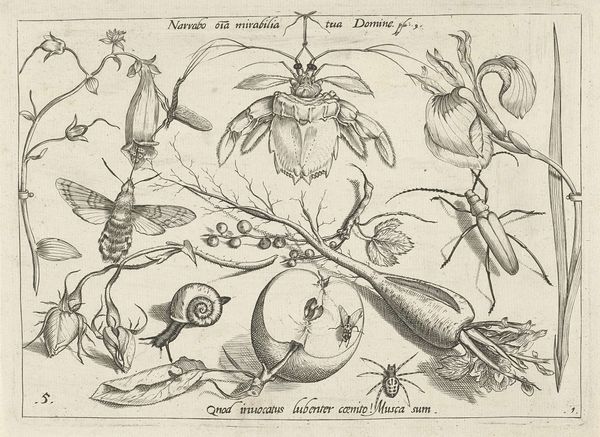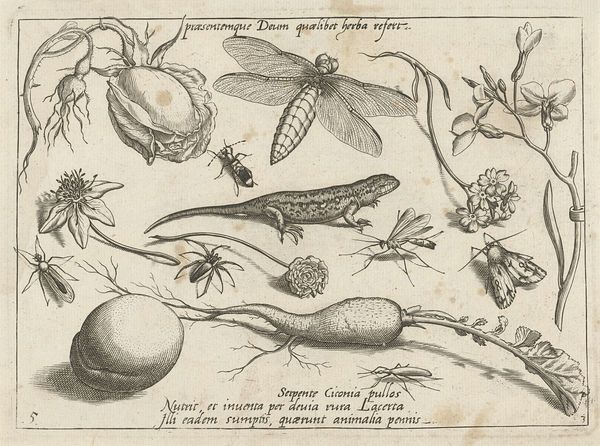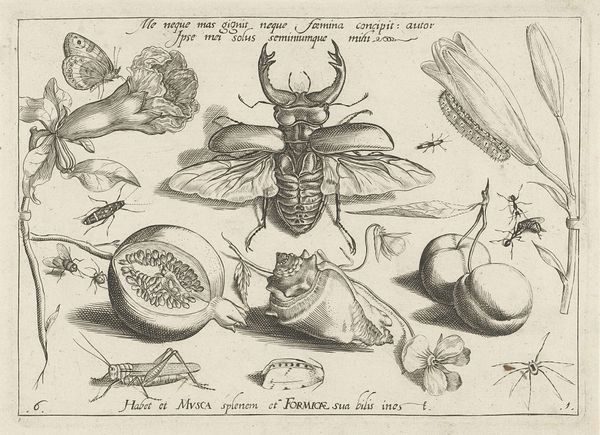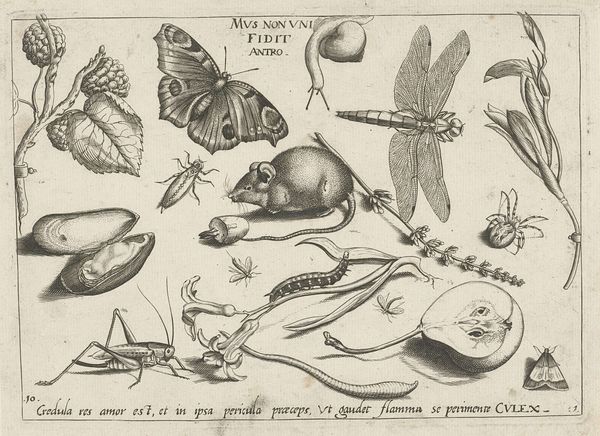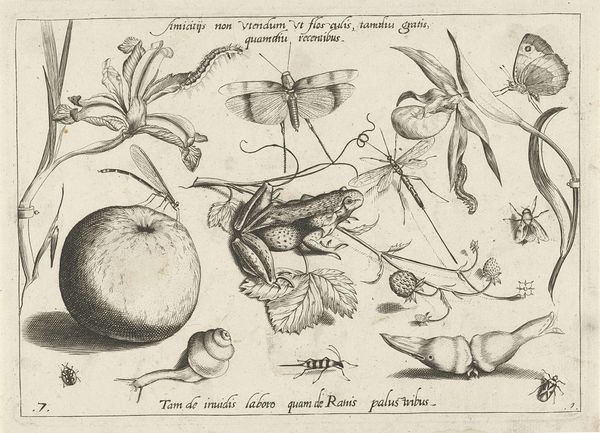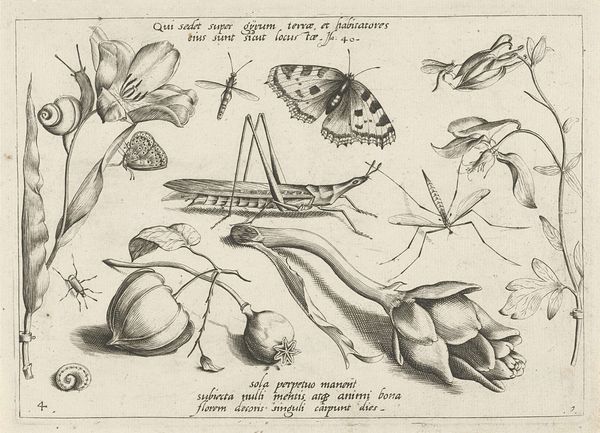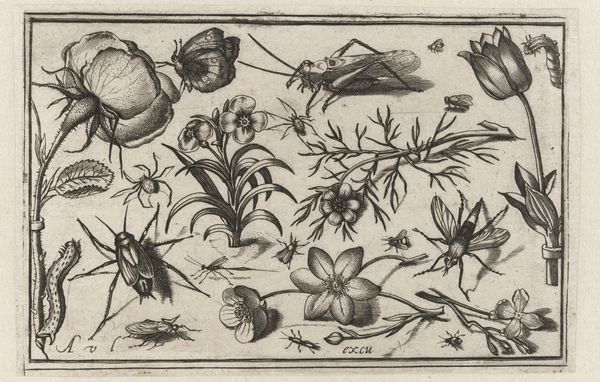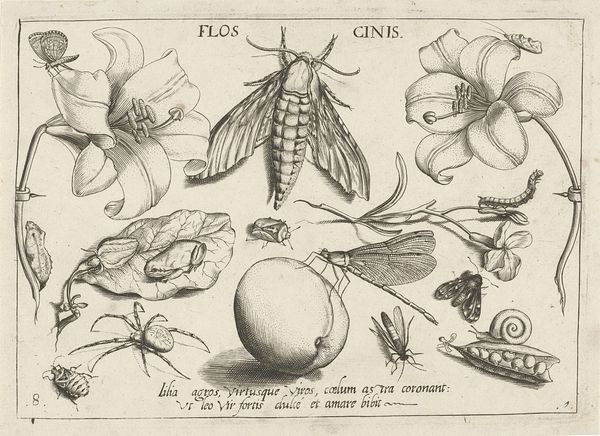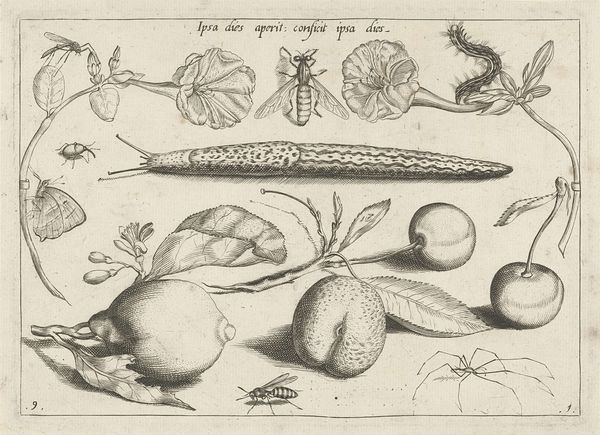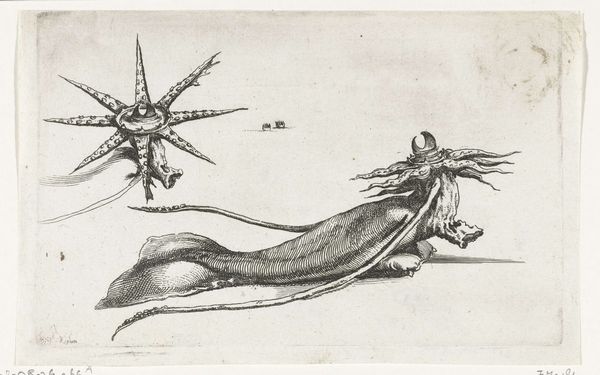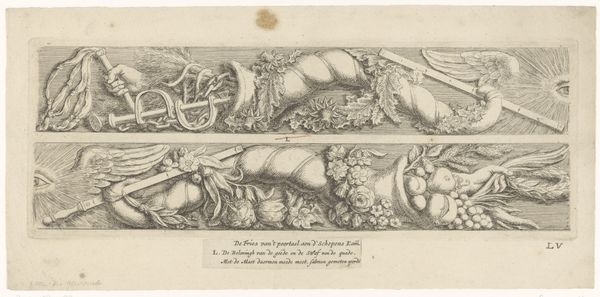
print, engraving
# print
#
11_renaissance
#
naturalism
#
engraving
Dimensions: height 154 mm, width 213 mm
Copyright: Rijks Museum: Open Domain
Editor: Here we have Jacob Hoefnagel's engraving, "Dieren, planten en vruchten rond een olifantkever," which roughly translates to "Animals, plants, and fruits around an elephant beetle," created sometime between 1592 and 1726. There’s a stark beauty to it, rendered entirely in monochrome lines. The detail is impressive. What catches your eye when you look at it? Curator: The overwhelming detail immediately points me to the labor involved in creating such a meticulous print. Consider the social context: prints like these made knowledge, especially knowledge of the natural world, reproducible and accessible. But it also represented the intense handiwork needed to produce each one. This wasn’t mass production in the way we understand it today; it was artisanal, repeatable labor. What do you make of the composition? Editor: Well, there’s a certain symmetry, the way the plants and insects are arranged around the beetle. But everything is so precisely delineated, so objective…almost scientific in its approach. It lacks a certain painterly freedom. Curator: Exactly. And this brings up questions about the value judgments placed on different modes of production. Is this ‘just’ craft because it emphasizes precise replication and botanical accuracy over personal expression? The very material - the metal plate, the ink, the paper - and the process of engraving, dictates a certain outcome, doesn't it? The image is more about recording empirical observation. Do you see any signs of artistic license being taken? Editor: Perhaps in the arrangement itself? There’s no natural ‘scene’ being depicted. It’s a collection of specimens. I guess there is skill in how he brought it all together, making something quite pleasing to the eye, but within constraints of making a perfect recording. Curator: Precisely. And understanding those constraints – the material conditions – helps us reassess how we value both the artwork and the labor that produced it. I never looked at an engraving like that before. Editor: Absolutely, it's interesting to consider the material and labor when interpreting a historical piece.
Comments
No comments
Be the first to comment and join the conversation on the ultimate creative platform.
